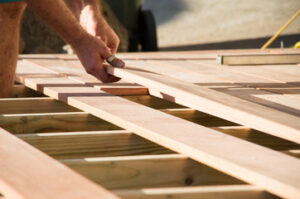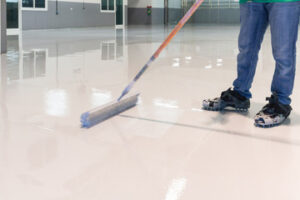
Window Tinting Your SUV is a great way to minimize glare while providing privacy. It also helps with reducing heat and lowering energy bills. It is important to know what you should look for in a window tinting company.
Entry-point tints use dyes that wear and fade with exposure to sunlight. Higher quality tints offer color stability. They reduce the SHGC and block UVA, UVB and IR while decreasing glare.
Cost
Window tint is a smart investment for car owners. It adds privacy, enhances styling, and can reduce interior cabin heat even on the hottest New York summer days. It also helps protect against UV solar radiation that causes fading to upholstery and dash materials as well as skin damage. This helps to maintain your car’s value and prolong its life.
The cost of window tinting depends on several factors. The most obvious is the type of film selected. There are a wide range of options from basic dyed window tints to carbon and metal particle films that offer superior durability and UV rejection. The higher quality window tints may also come with a warranty. These films are more expensive than basic dyed window tints, but they are worth the extra money.
Another factor is the installer’s experience. Tinting windows is an art, and it takes time to master the process. A seasoned installer will know how to work with different types of window films, and they will have the tools to get the job done right. This will save you a lot of frustration and expense.
It is also important to consider the brand of window tint that you are purchasing. High-quality tints will have a long warranty and outperform their competition in terms of clarity, durability and performance. For example, Rayno recently formulated a new type of carbon tint called MonoCarbon, which looks blacker and has a more subtle finish than other carbon tints. This is a great option for those who want the look of carbon, but don’t want to spend the money on a premium film.
In addition to the type of tint you choose, the price of window tinting can vary by region. This is because the laws governing the level of darkness allowed in vehicles vary by state. Moreover, the cost of tinting will be affected by the complexity of the job and the size of the vehicle. For instance, trucks with extended or crew cabs require more film and time than sedans.
After window tint installation, you should wait a week before cleaning your windows. You should use a mild soap and a non-abrasive cleaner. Avoid ammonia-based and abrasive cleaners, as they can scratch the window tint. You should also avoid scraping the window tint with any blades or squeegees.
Appearance
Window tinting protects the interior of your car and keeps it looking new. It blocks 99% of harmful UV solar energy that can cause fading and discoloration of upholstery, dash surfaces, and skin damage. It also reduces glare, making driving safer and more comfortable. It can also help you save on energy costs by reducing the need for air conditioning. Window tints are available in a variety of shades, so you can choose the one that best suits your personal style and budget.
Window tints can be applied to the front and rear windows of your vehicle. However, the type of tint you choose depends on your location and climate. For example, if you live in a hot area, you may want to consider ceramic or crystalline films that are extremely effective at blocking heat and glare. These types of films also offer higher optical clarity and durability.
In addition to their functional benefits, window tints are stylish and affordable. They can make your car look a lot more attractive, and they can also improve your safety by preventing glare from the sun or headlights at night. They can also deter break-ins by making it more difficult for potential perpetrators to see inside the car.
When choosing a tint, you should remember that the darkness of the film is measured by its Visible Light Transmission (VLT) percentage. The lower the VLT percentage, the darker the tint. Darker tints provide more privacy and glare reduction, but they can also block out natural light. Therefore, it is important to consult a professional about your options.
It is a good idea to hire a professional to install window tint because it will ensure that the job is done correctly and does not leave bubbles or streaks on the glass surface. Professional installation will also help you avoid the costly mistakes that can occur when you try to do it yourself.
Privacy
Window tints offer privacy benefits for your vehicle’s occupants and make it more difficult to see inside. This can help prevent vandalism and theft, as well as provide a more comfortable driving experience by reducing glare. They can also protect your skin from harmful UV rays, which can cause premature aging and increase the risk of skin cancer.
In addition to providing privacy, window tints can block a significant amount of solar heat, reducing the need for excessive air conditioning and helping you save money on fuel. They also reduce the glare from direct sunlight or oncoming headlights, which can improve driver visibility and help prevent eye strain and accidents.
Different types of window tinting films work in different ways to achieve the desired results. Dyed films absorb the sun’s rays, while metallic films reflect them, significantly reducing heat and glare. Ceramic and carbon films are highly durable, with a matte finish that helps prevent fading and glare.
Choosing the right window tinting film is important for homeowners and commercial building owners. The VLT (visible light transmission) rating of the film determines how much light passes through the windows. A lower VLT rating offers more privacy, but a higher VLT rating allows more natural light into a room and can enhance the aesthetics of the space.
When it comes to residential and commercial window tinting, you need to consider the privacy and security needs of your home or business. For example, if you have small children in the house, you may want to choose a darker shade than 18% to improve their safety. It’s also important to understand the laws in your area and how dark you can legally tint your car windows.
If you’re looking for a quality window tinting company, look for one that offers a lifetime warranty on both the installation and the film itself. In addition, the company should provide a detailed written estimate and answer any questions you have about the process.
While tinted glass can be more expensive than factory-tinted windows, it’s a safer alternative to bare glass. Tinted windows can hold shattered glass together in an accident or break-in, minimizing the risk of injuries from flying glass shards. Additionally, window tints can prevent the sun’s damaging rays from reaching the interior of your car, which can damage seats and dashboards.
Durability
The durability of window tinting depends on a number of factors, including the type of film you choose, the quality of the installation, and how it is maintained. The best way to ensure the longevity of your tint is to seek professional installation and regular maintenance by a trained technician. It is also important to consider the environment in which you live, as extreme temperatures and sunlight can degrade even the most durable tints.
Window tint can be made from a variety of materials, but the most common include dyed, carbon, and metalized films. Each of these films offers different benefits, but they all offer some level of heat reduction and UV protection. Dyed tints have a relatively short lifespan, and are prone to fading and discoloration over time. Carbon and metalized tints are typically more durable, lasting between 5 and 10 years. They offer a higher level of heat rejection and UV protection than dyed tints, but can interfere with cellphone and GPS signals due to the metallic elements in their construction.
When shopping for window tint, it is essential to consider the VLT percentage (visible light transmission). Most states have regulations concerning the maximum amount of light that can pass through your windows, and if you opt for a darker tint, you may need to get special permission from your local authorities.
Aside from the VLT percentage, it is important to look for a high TSER (Total Solar Energy Rejected) rating. This rating measures the tint’s ability to block out UVA and UVB rays, as well as infrared radiation. A high TSER rating can help prevent sunburn, skin cancer, and interior damage to the car’s seats and dashboards.
To extend the lifespan of your tint, you should regularly clean it with an ammonia-free cleaner and a soft cloth or rubber squeegee. Avoid using a razor blade or scraper, as this can scratch the tint and reduce its effectiveness. Additionally, you should avoid exposing your windows to direct sunlight for extended periods of time. Keeping your windows in the shade as much as possible can help reduce fading and degradation of the tint. In addition, you should inspect the tint regularly for signs of wear and tear, such as bubbles or peeling.


